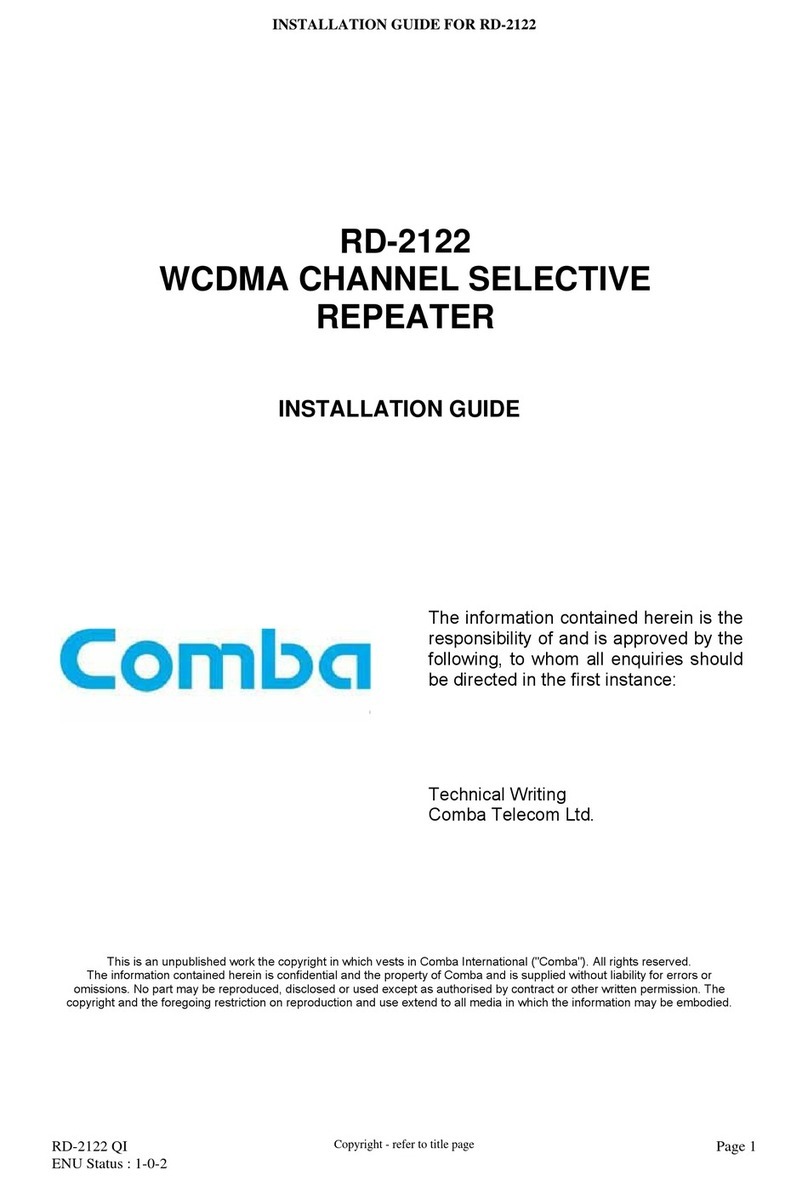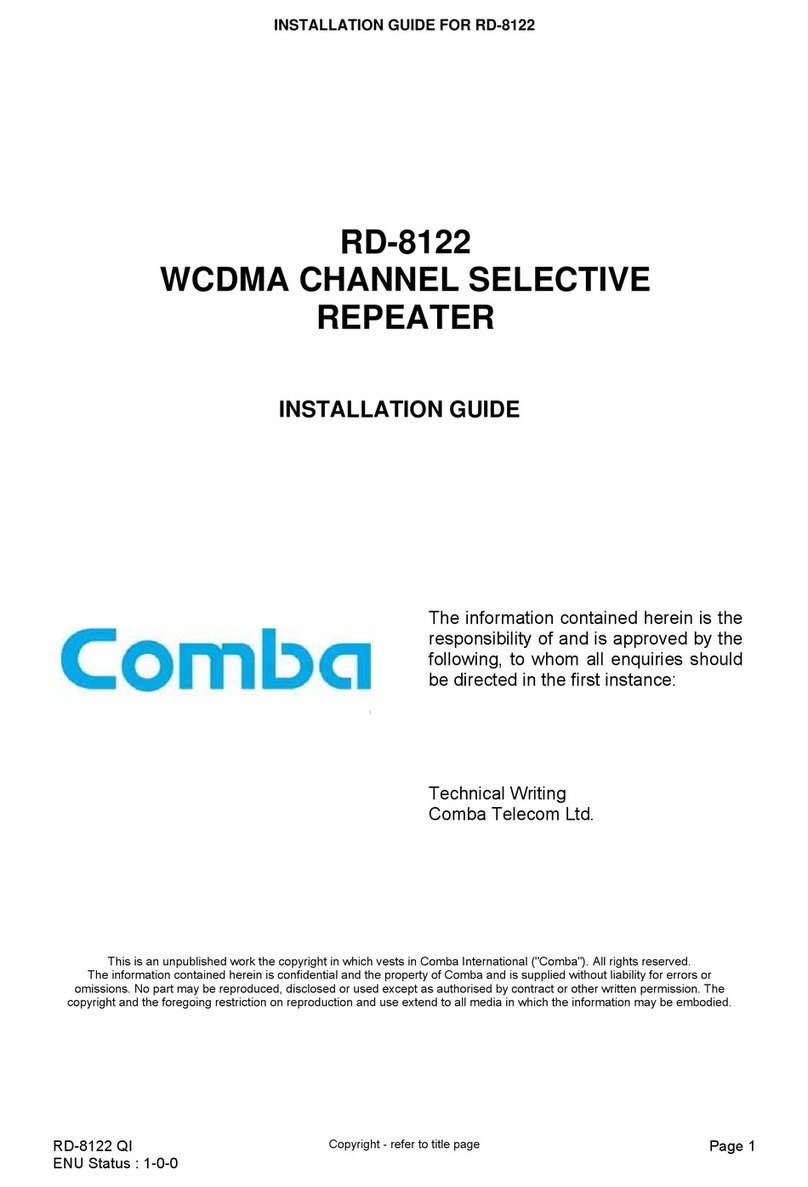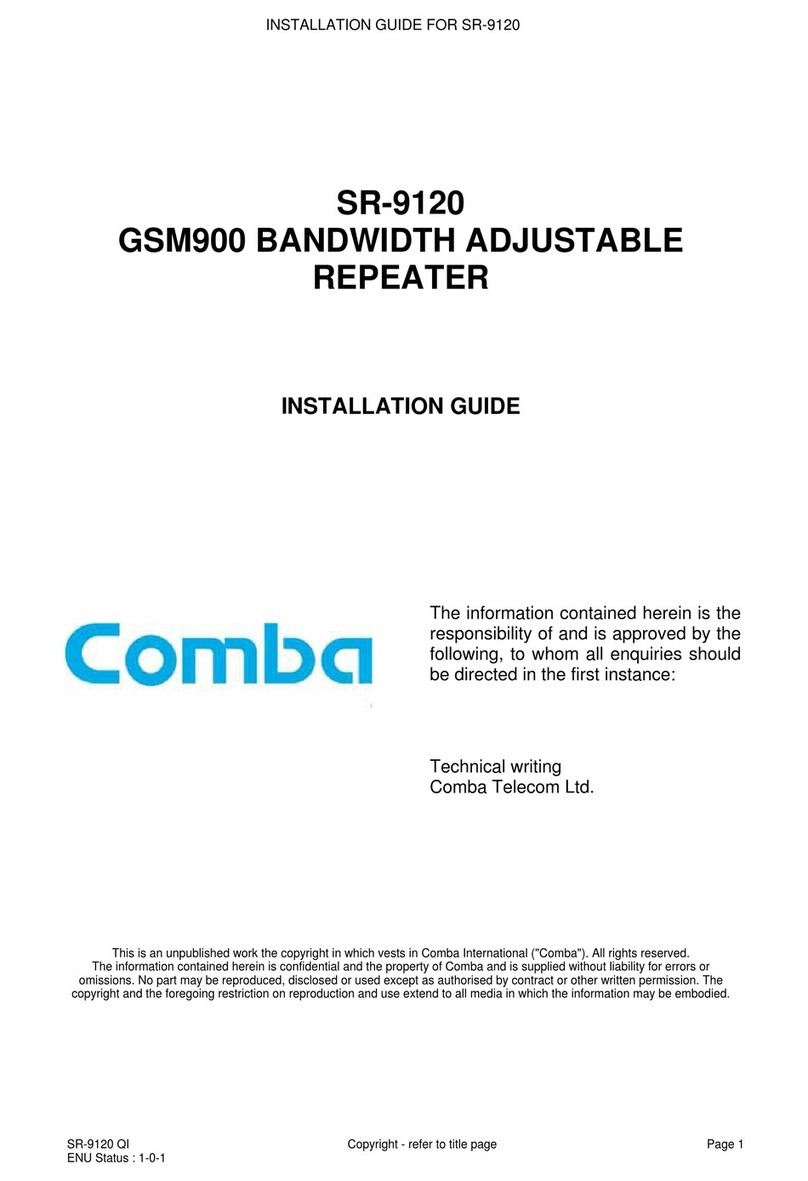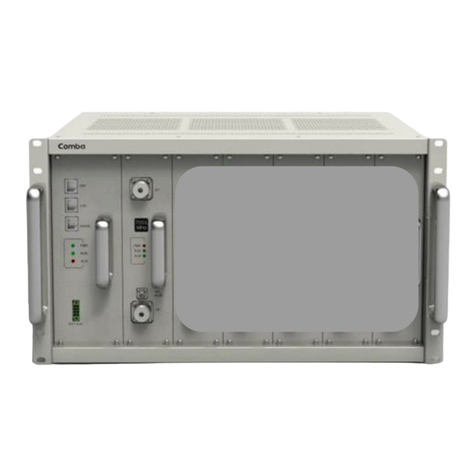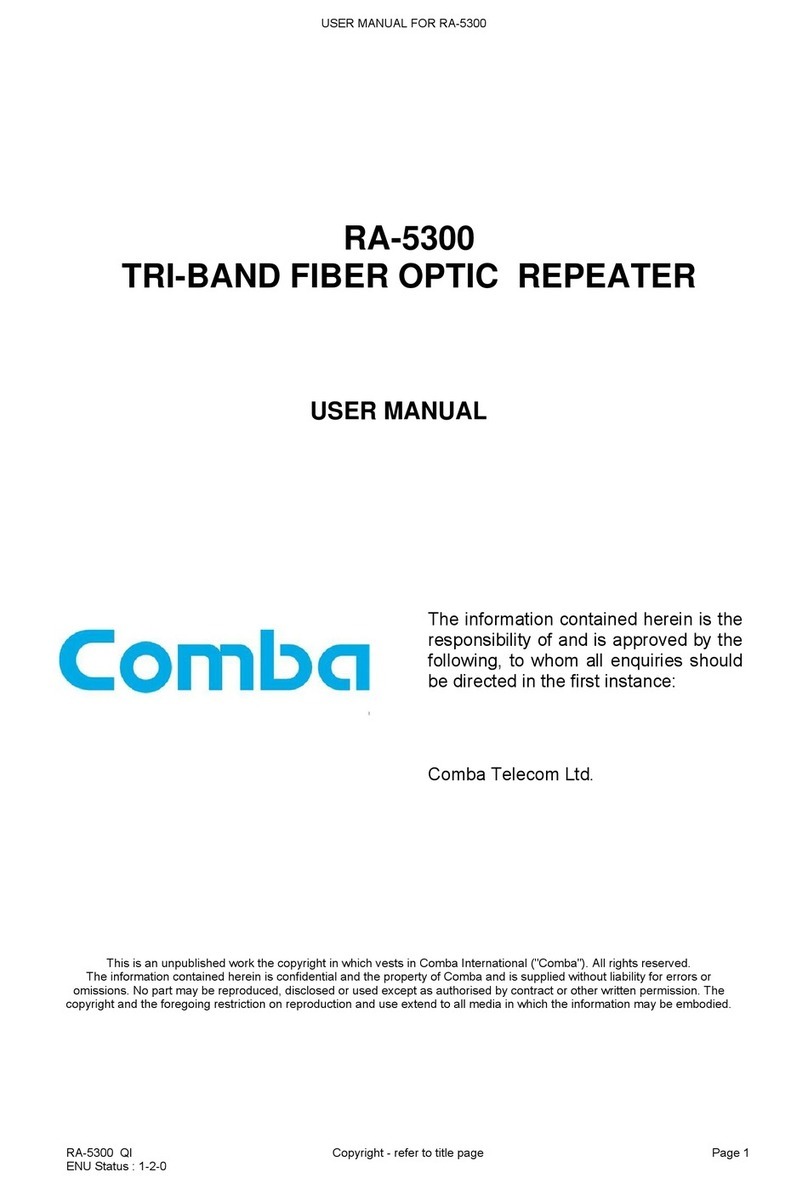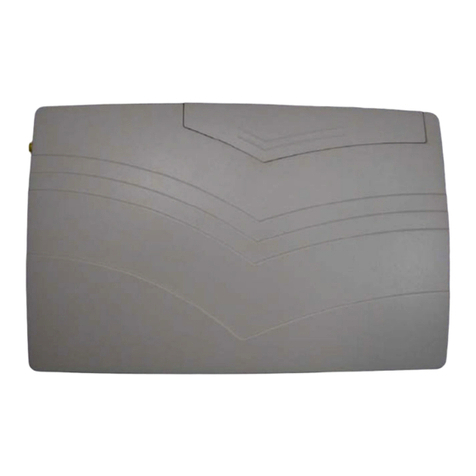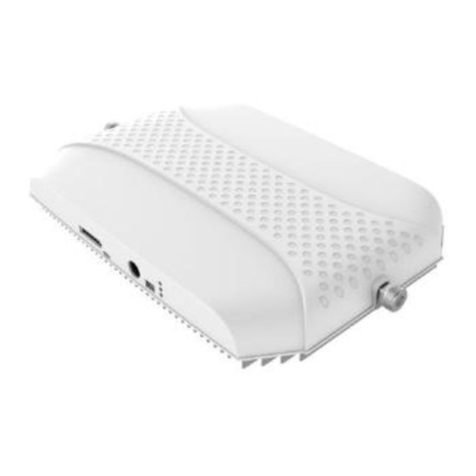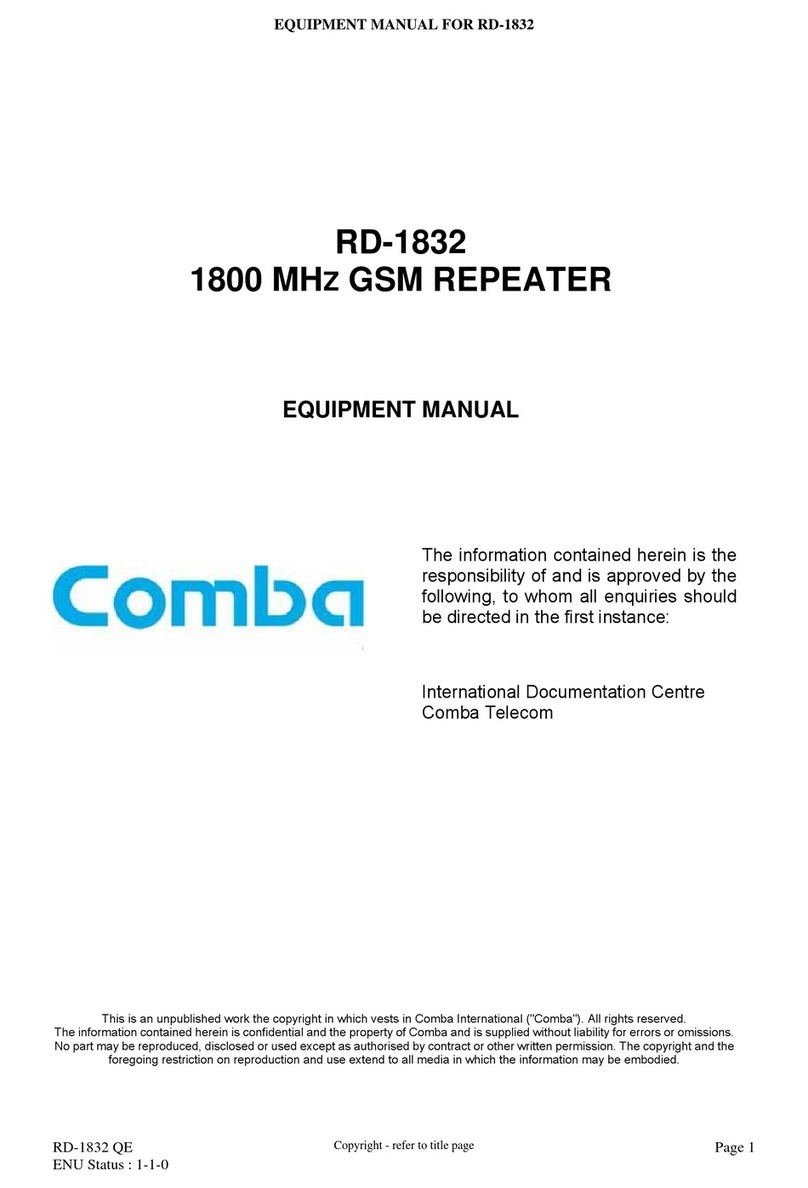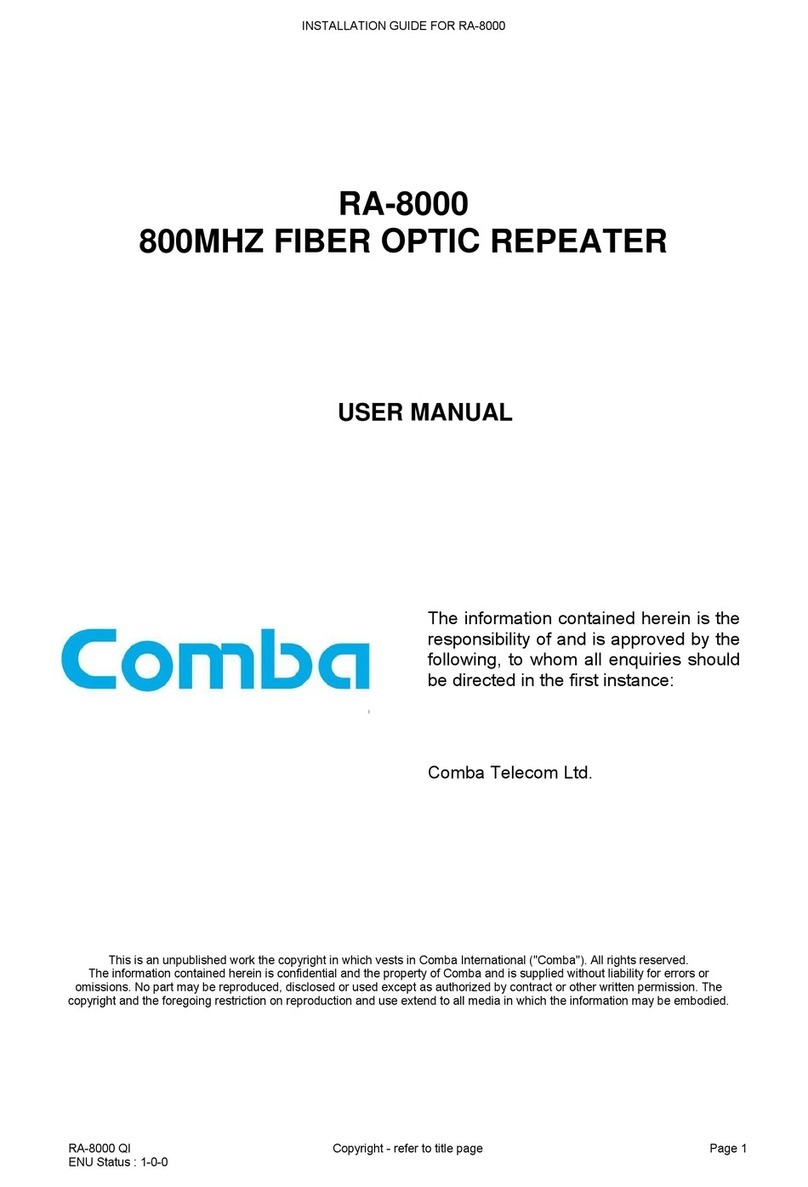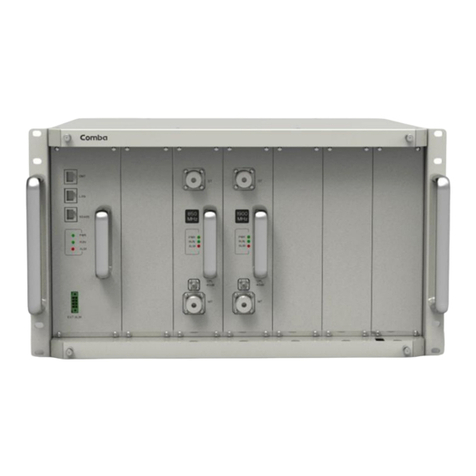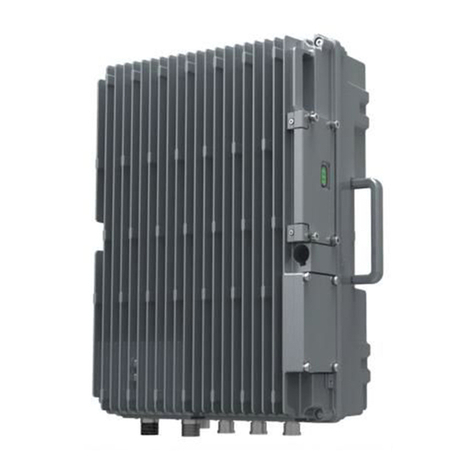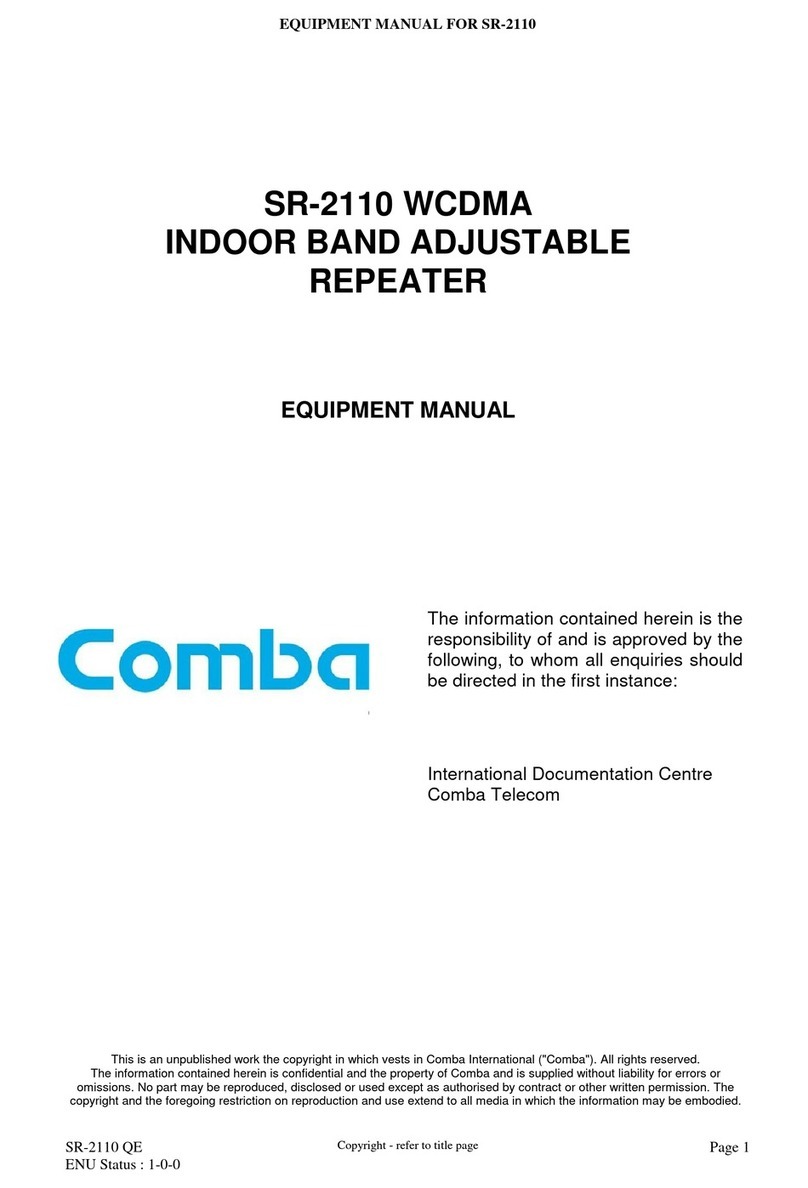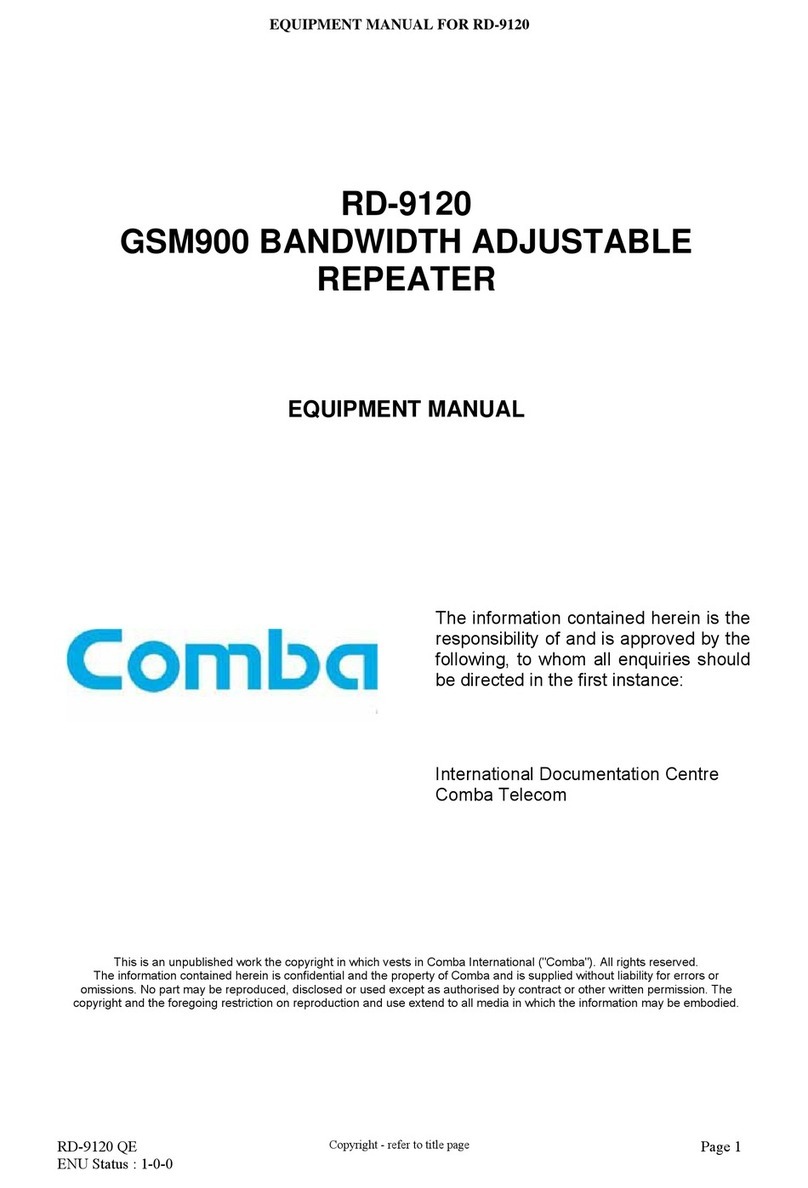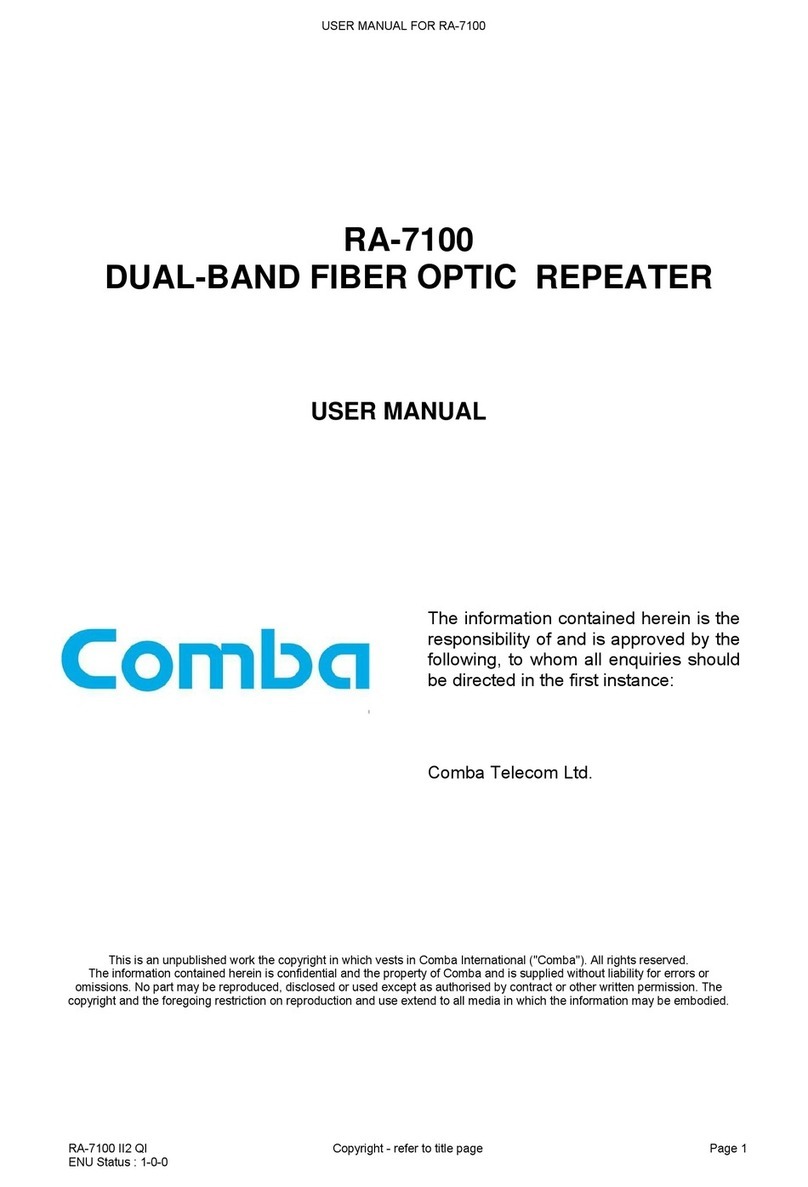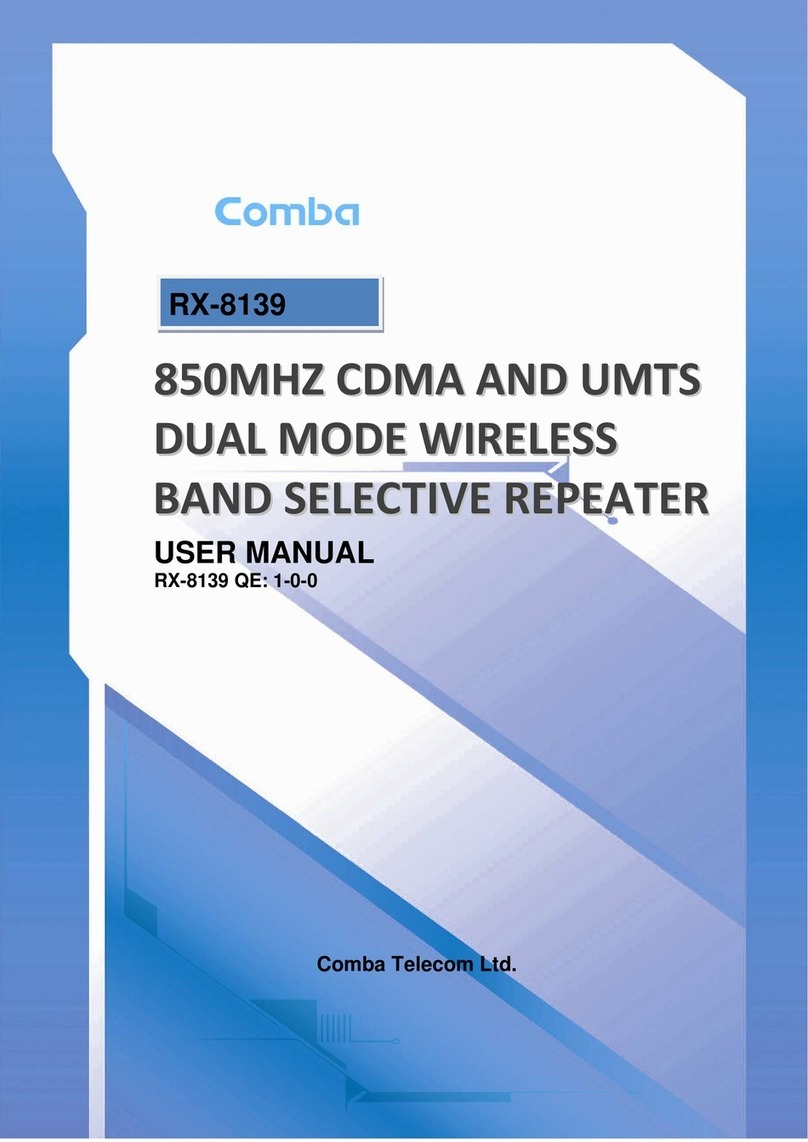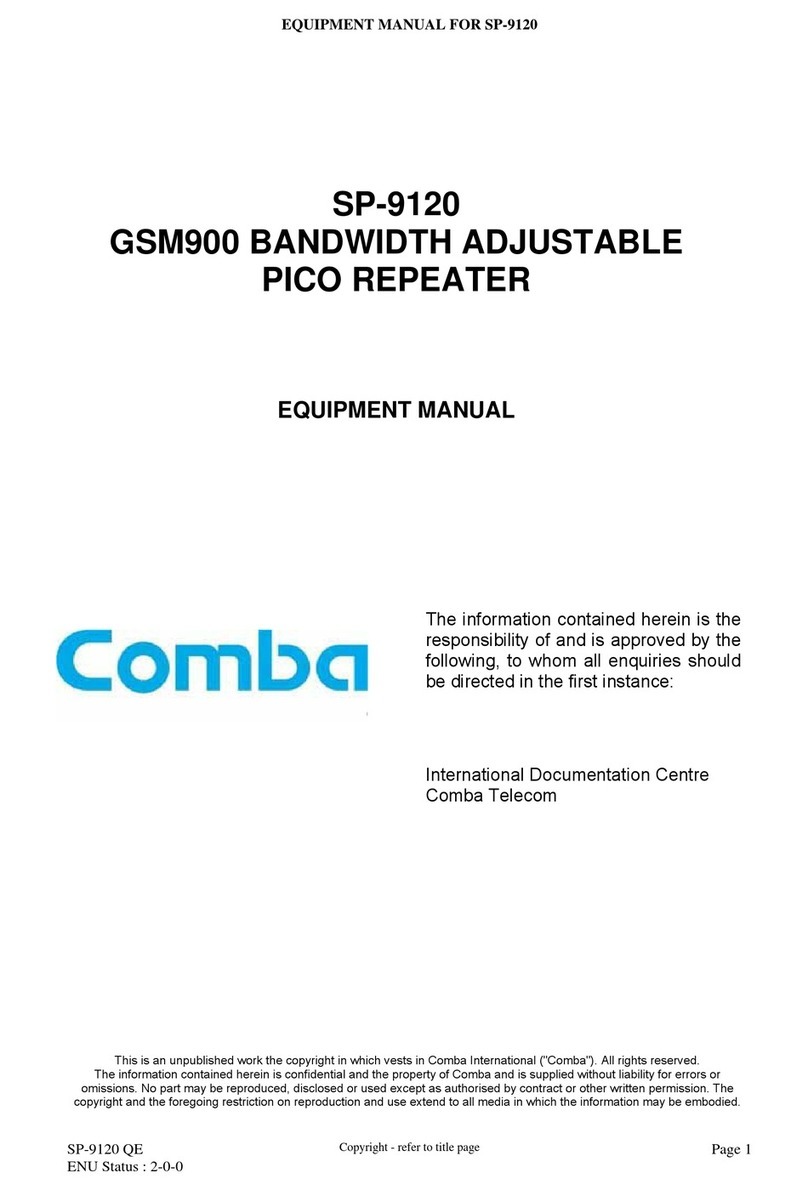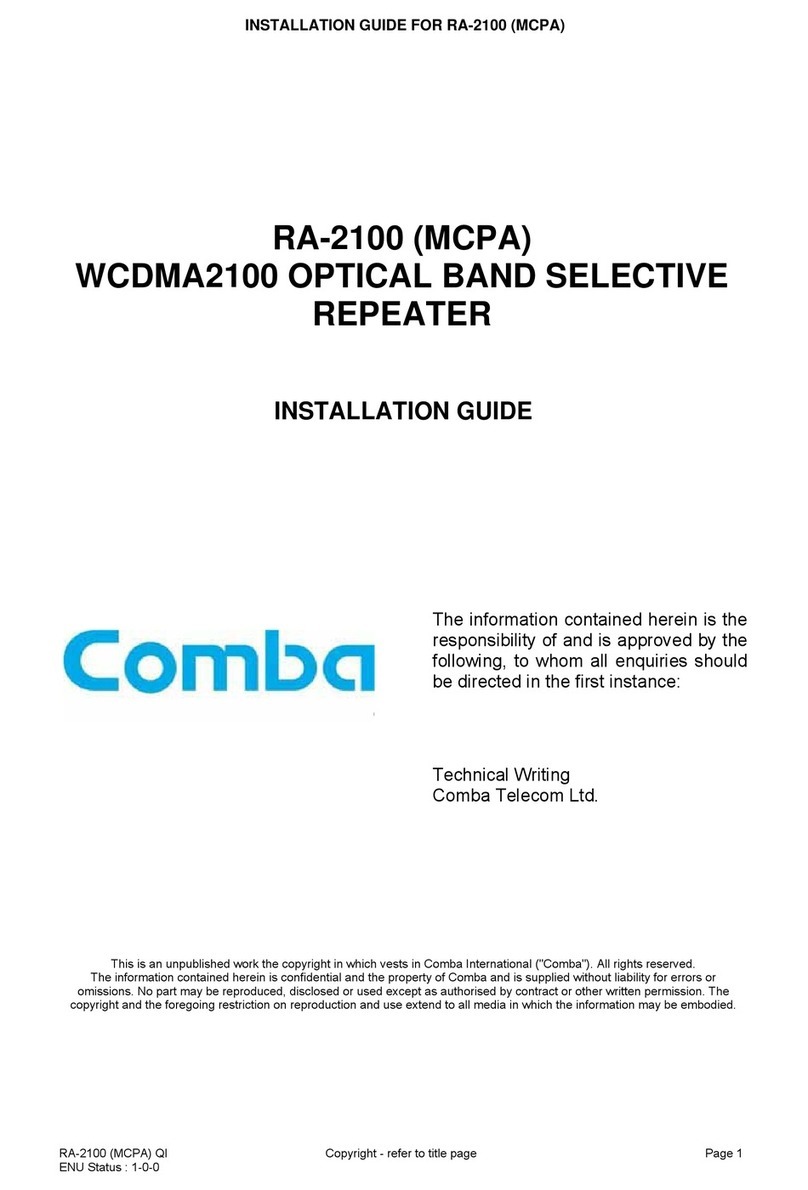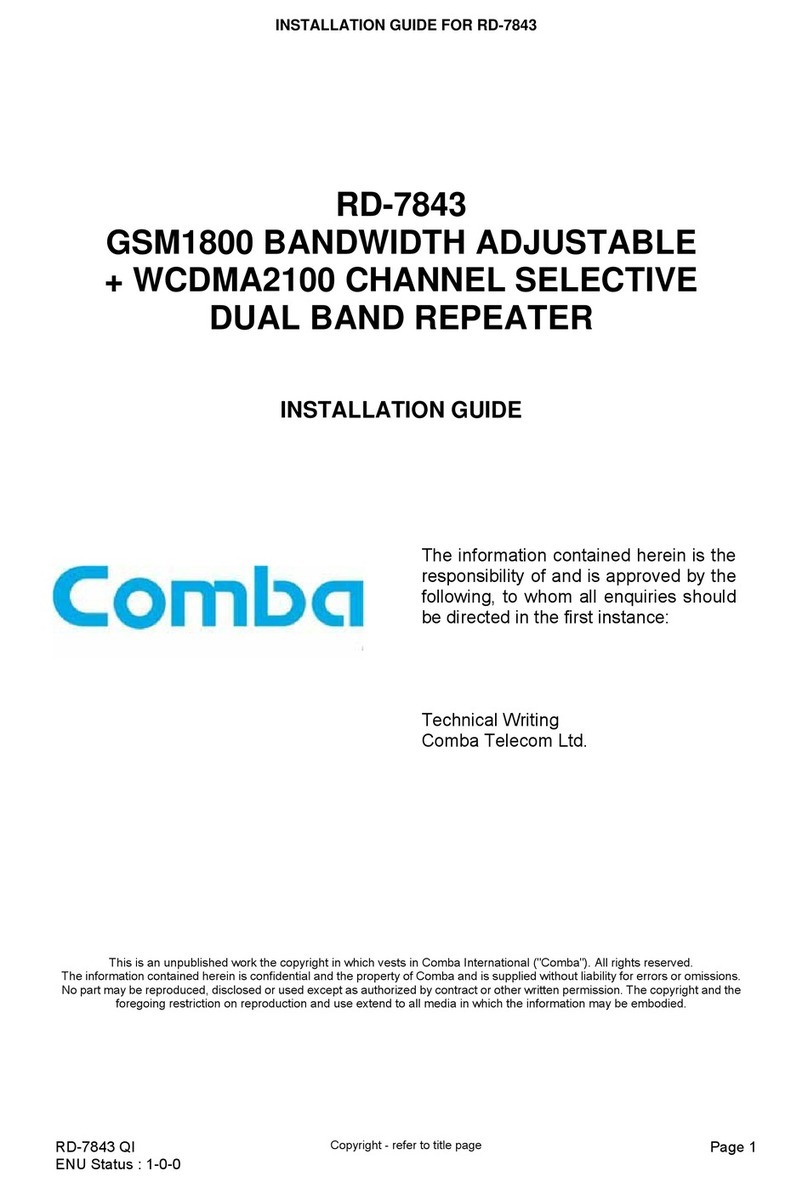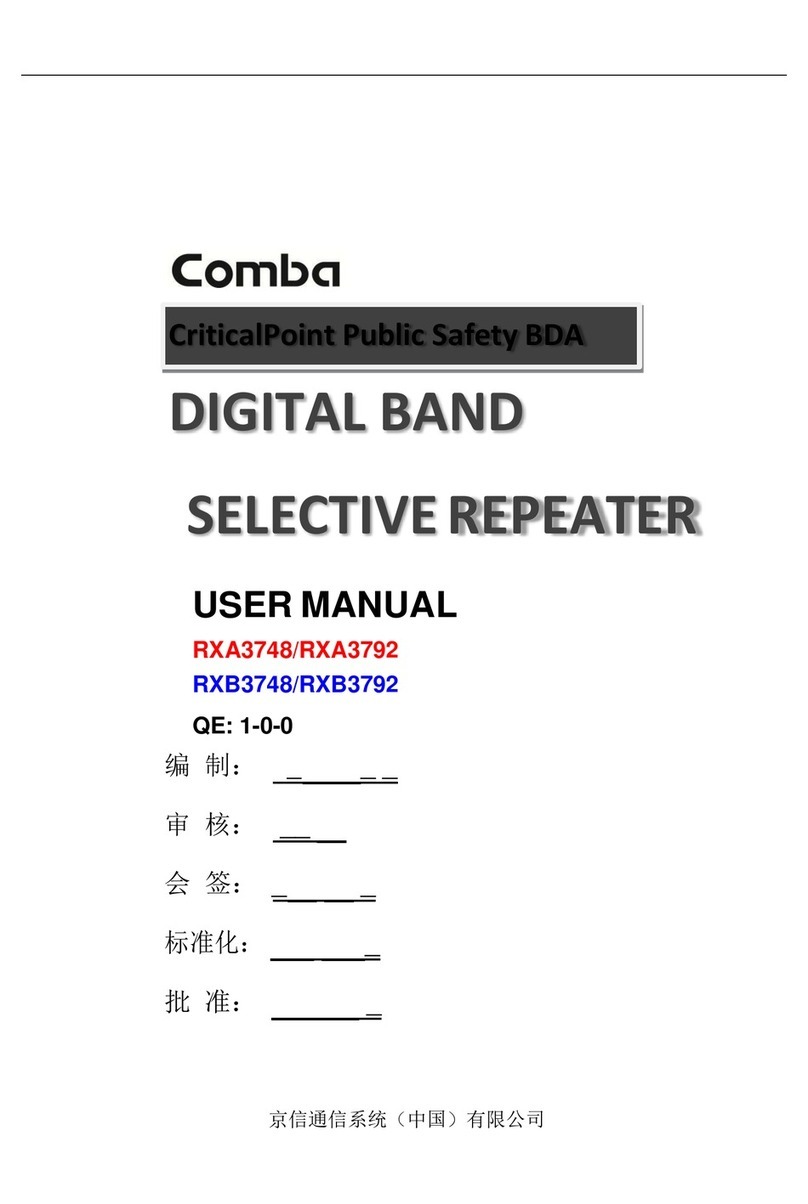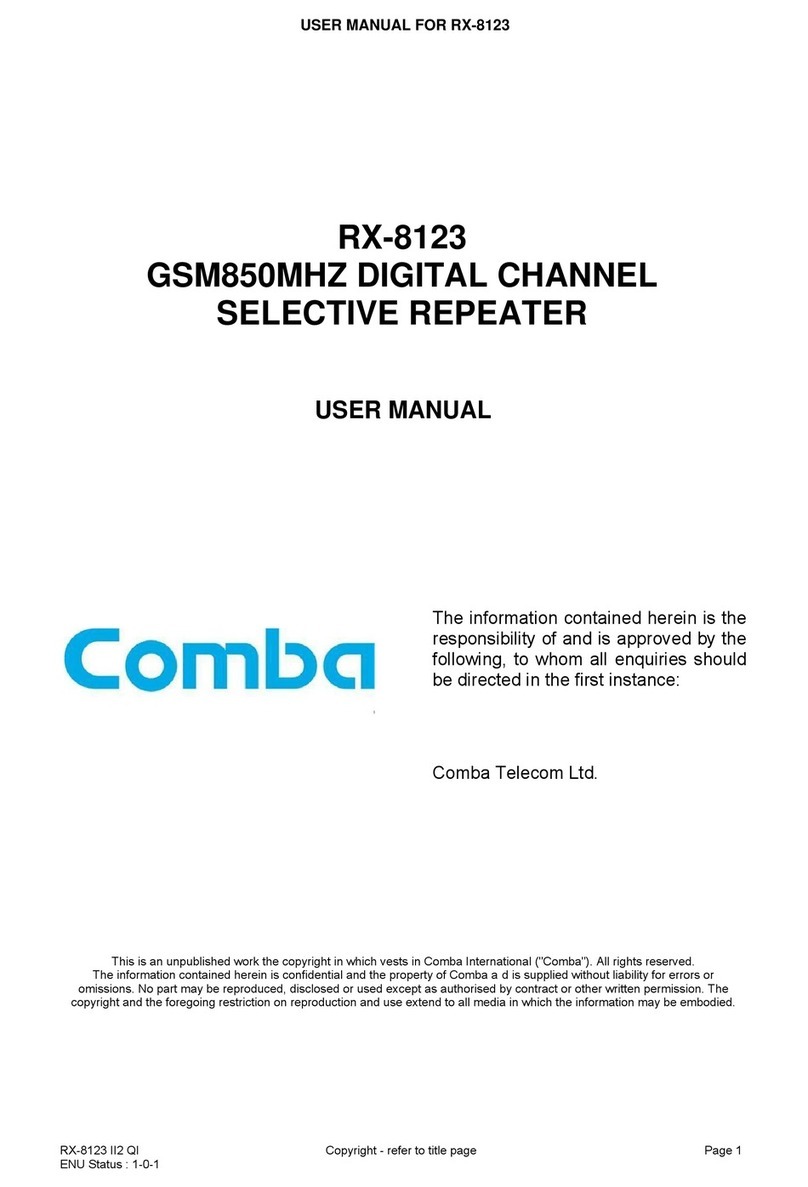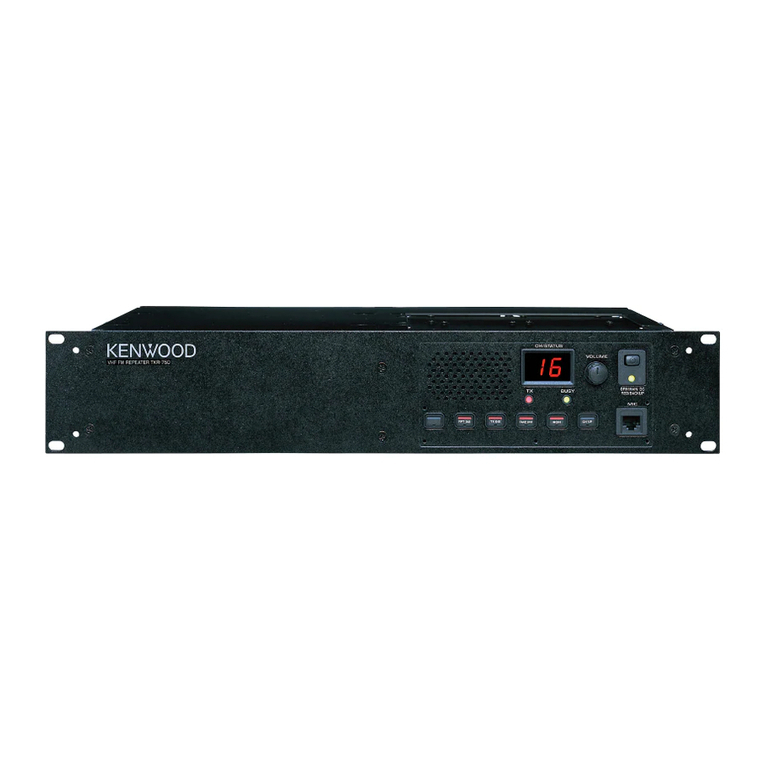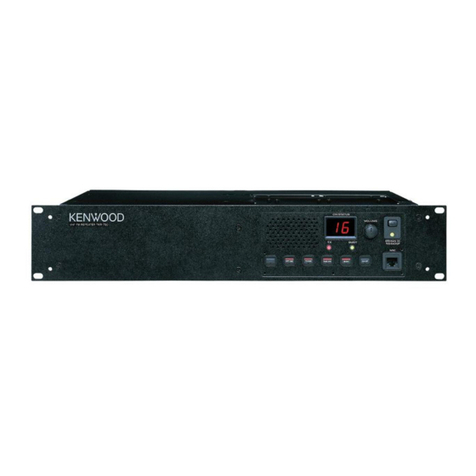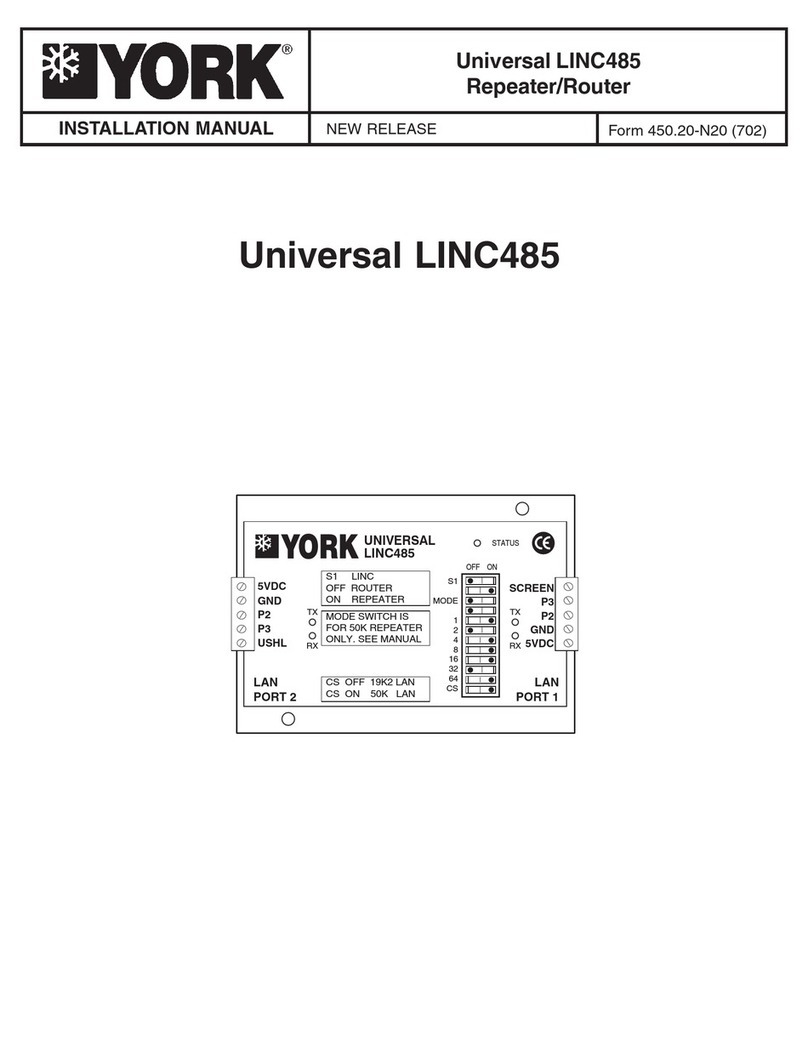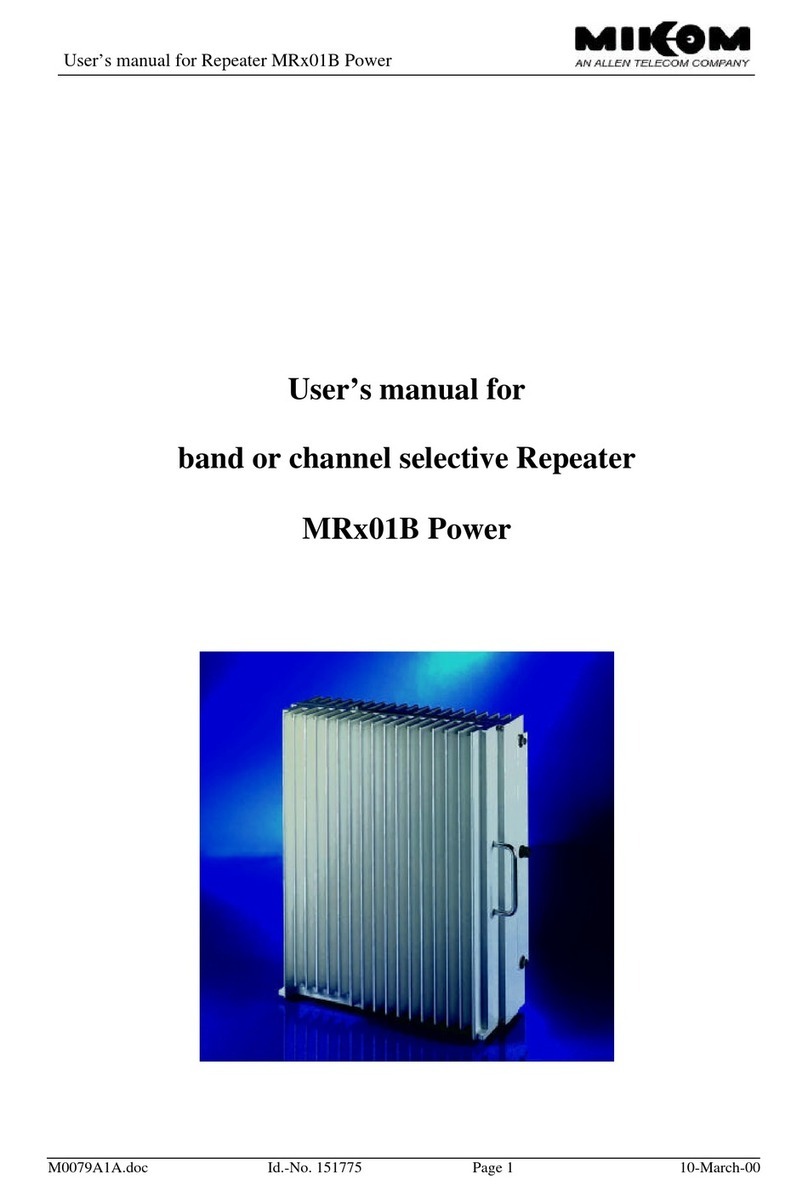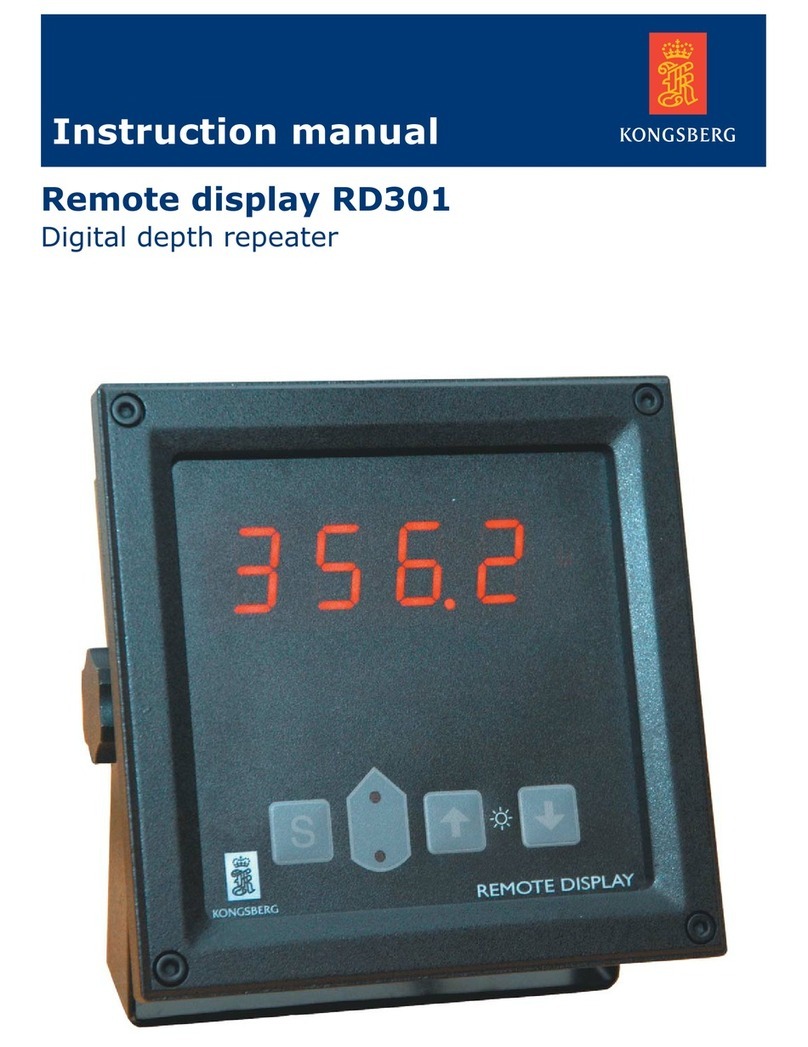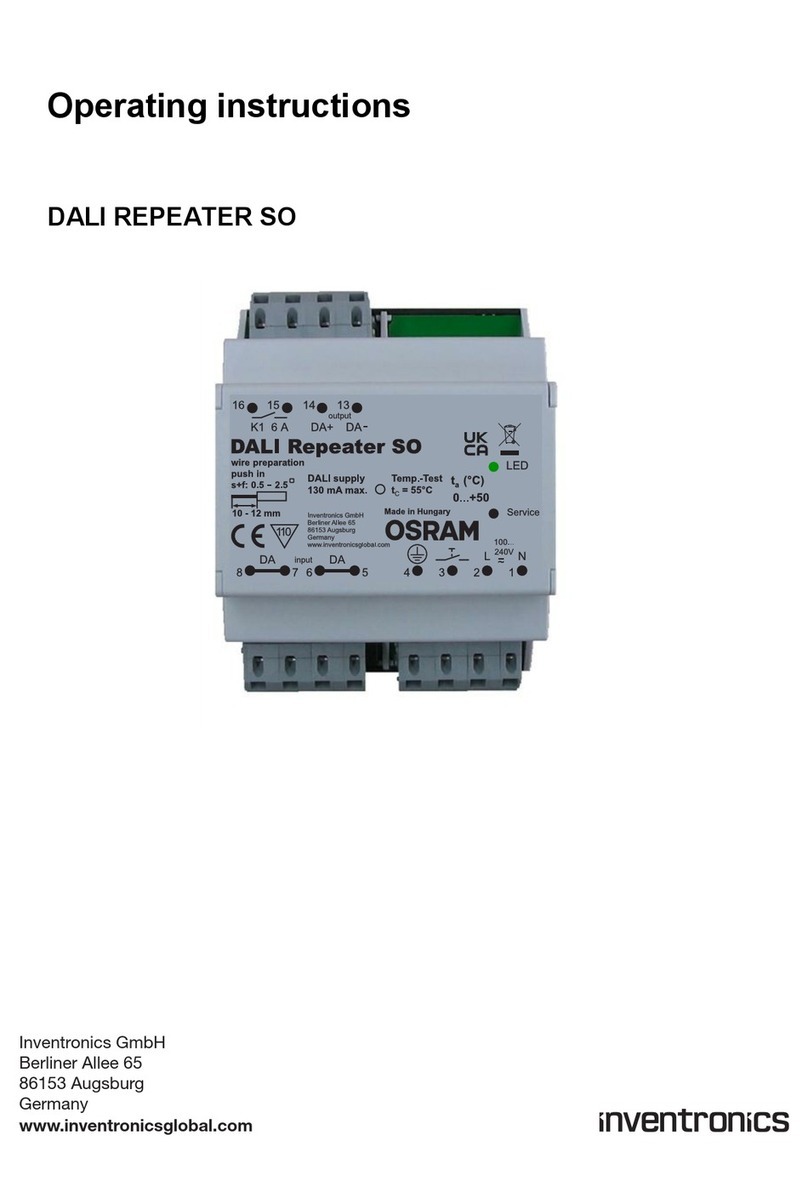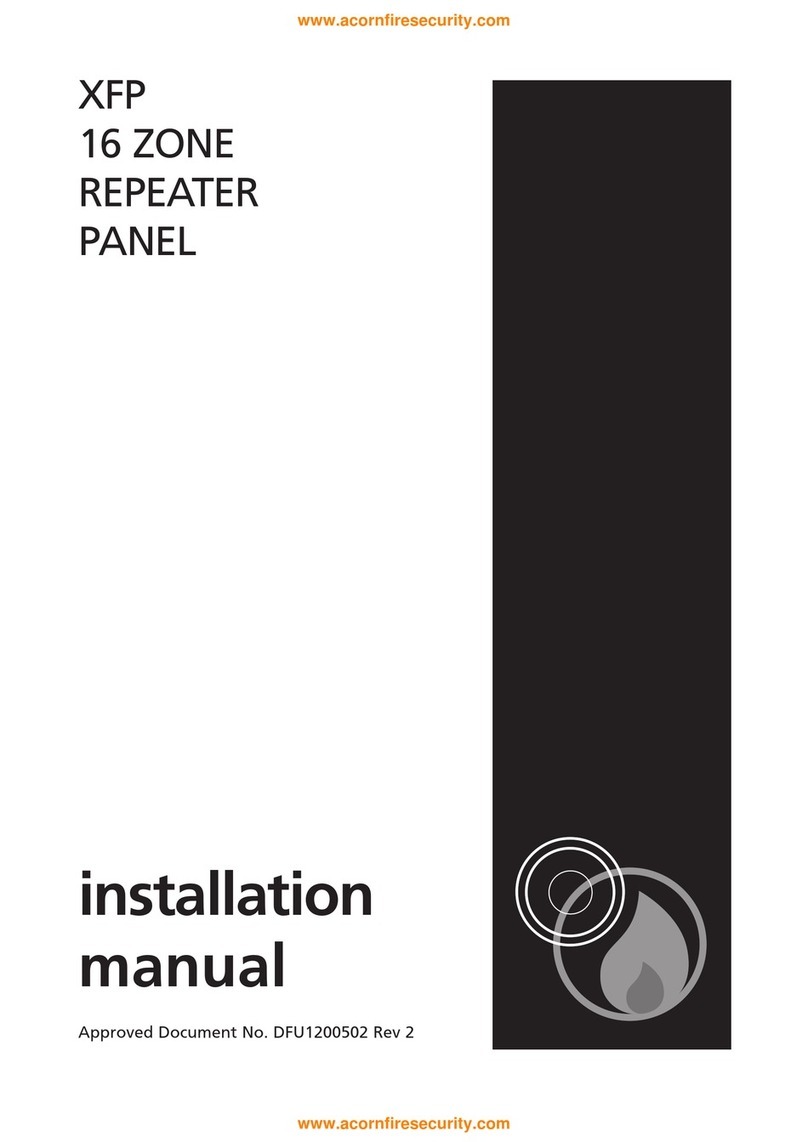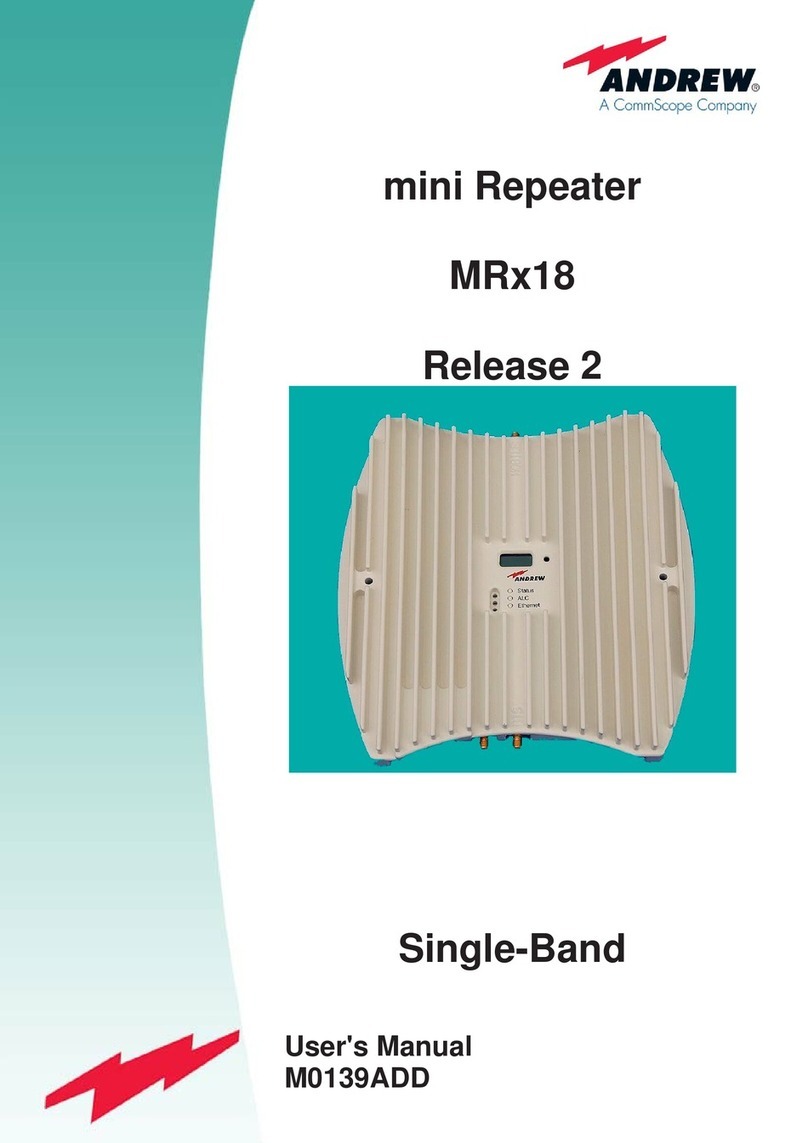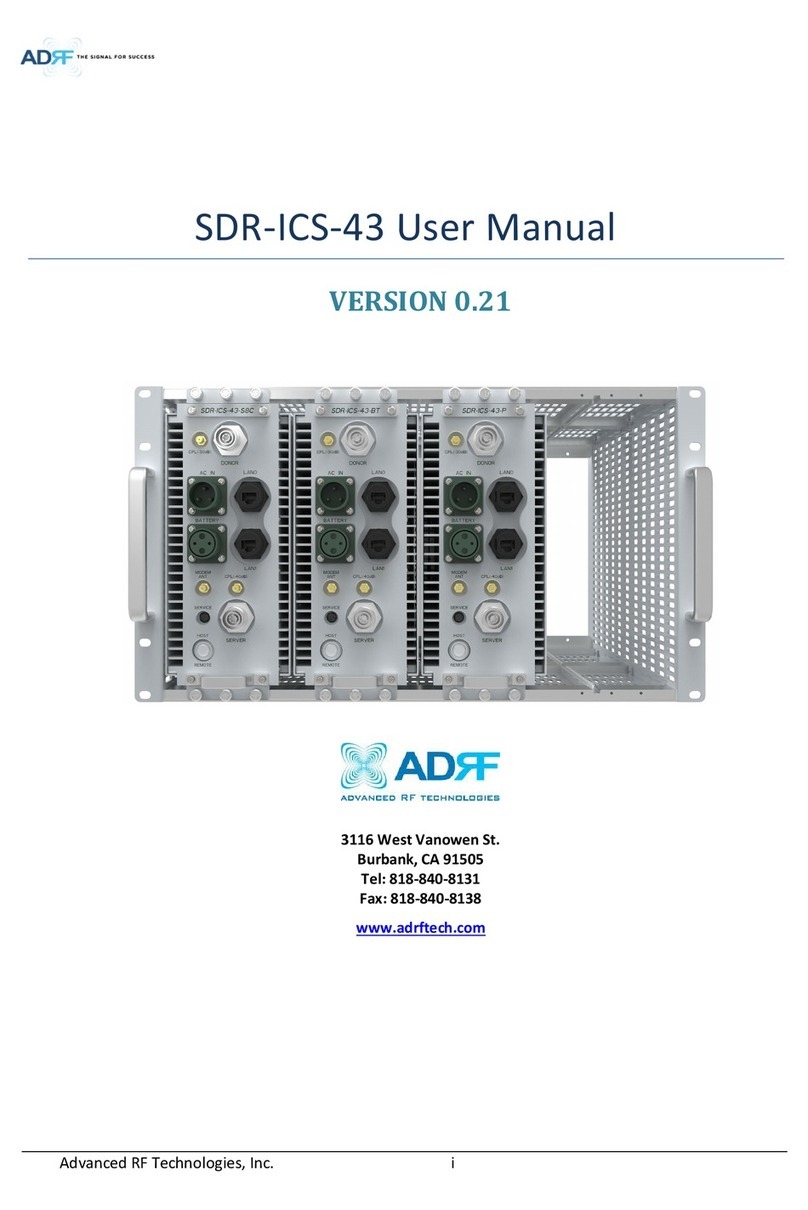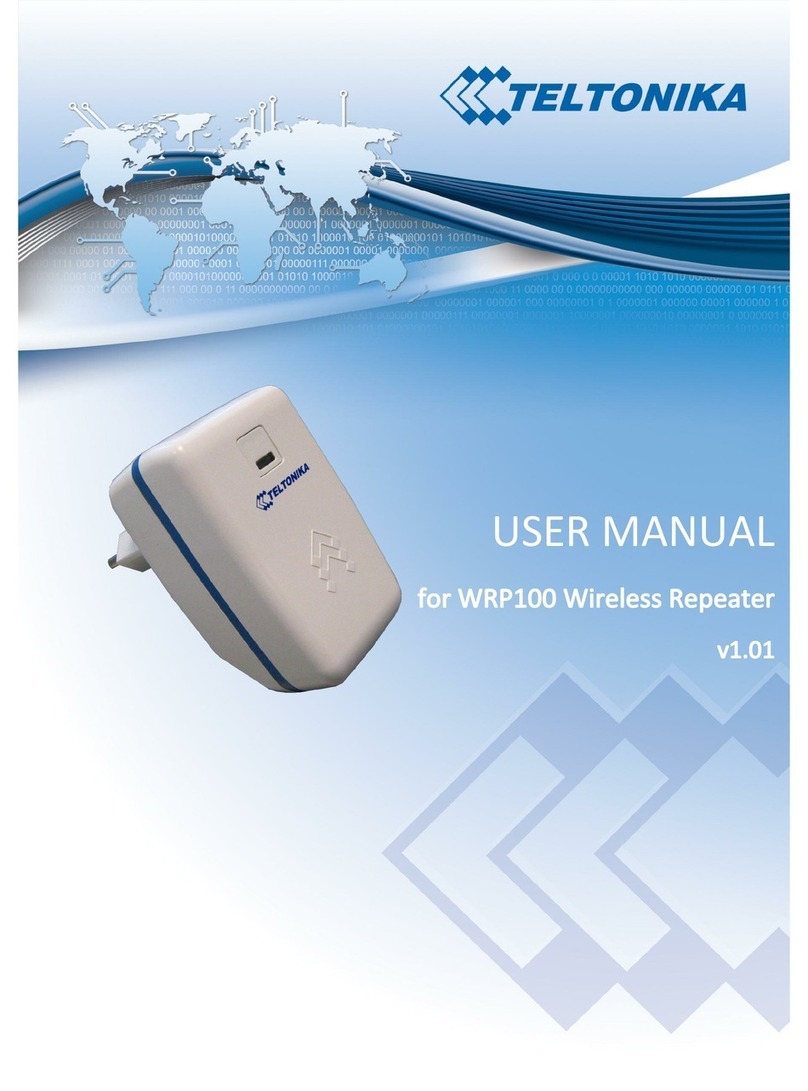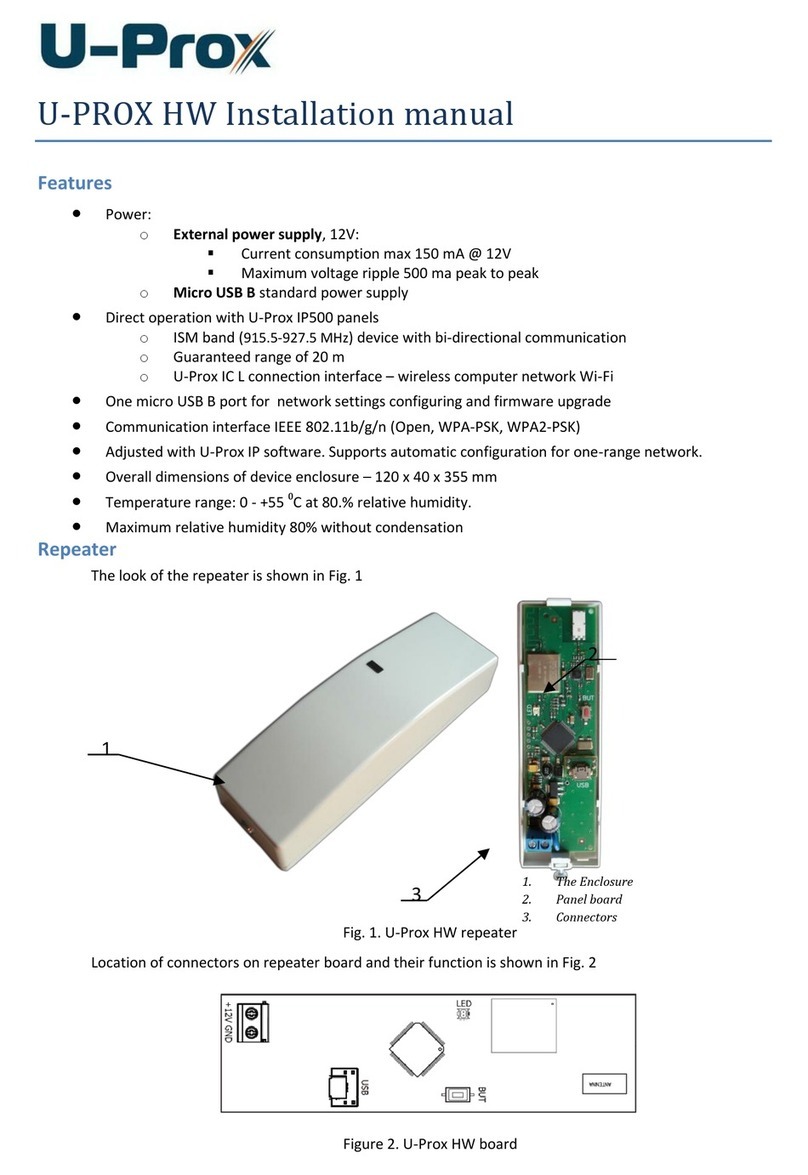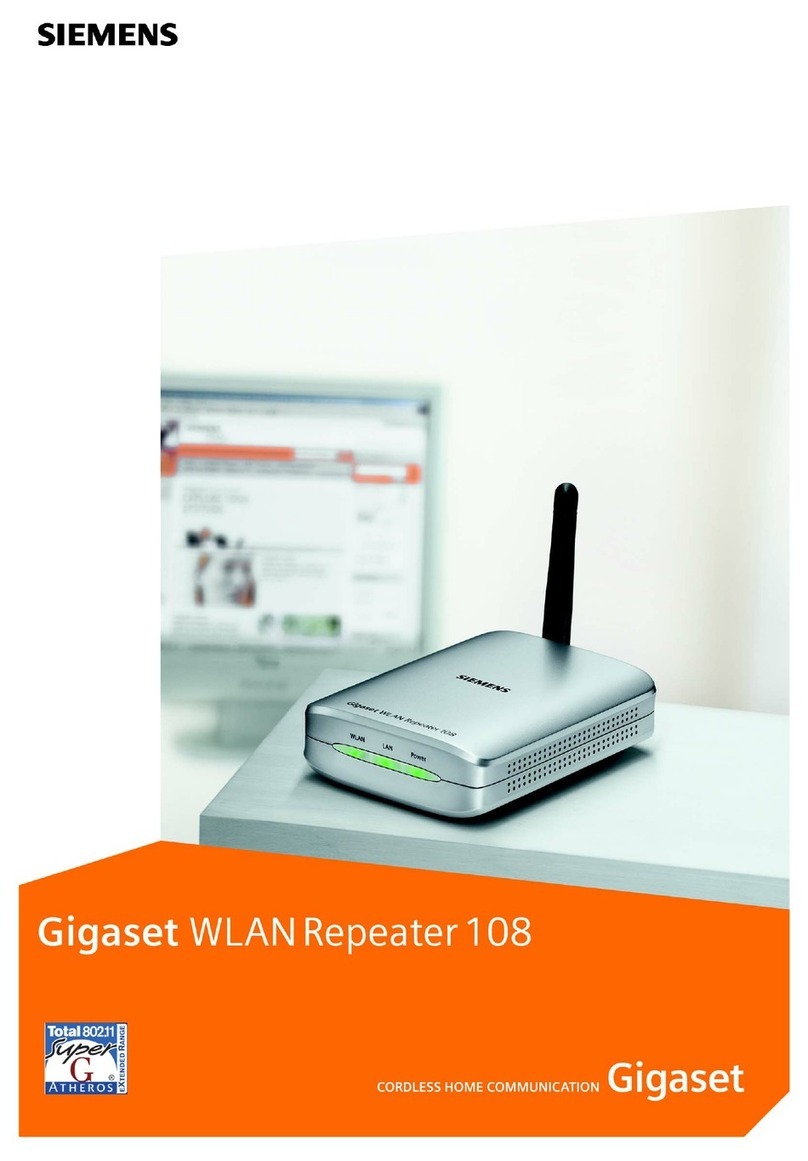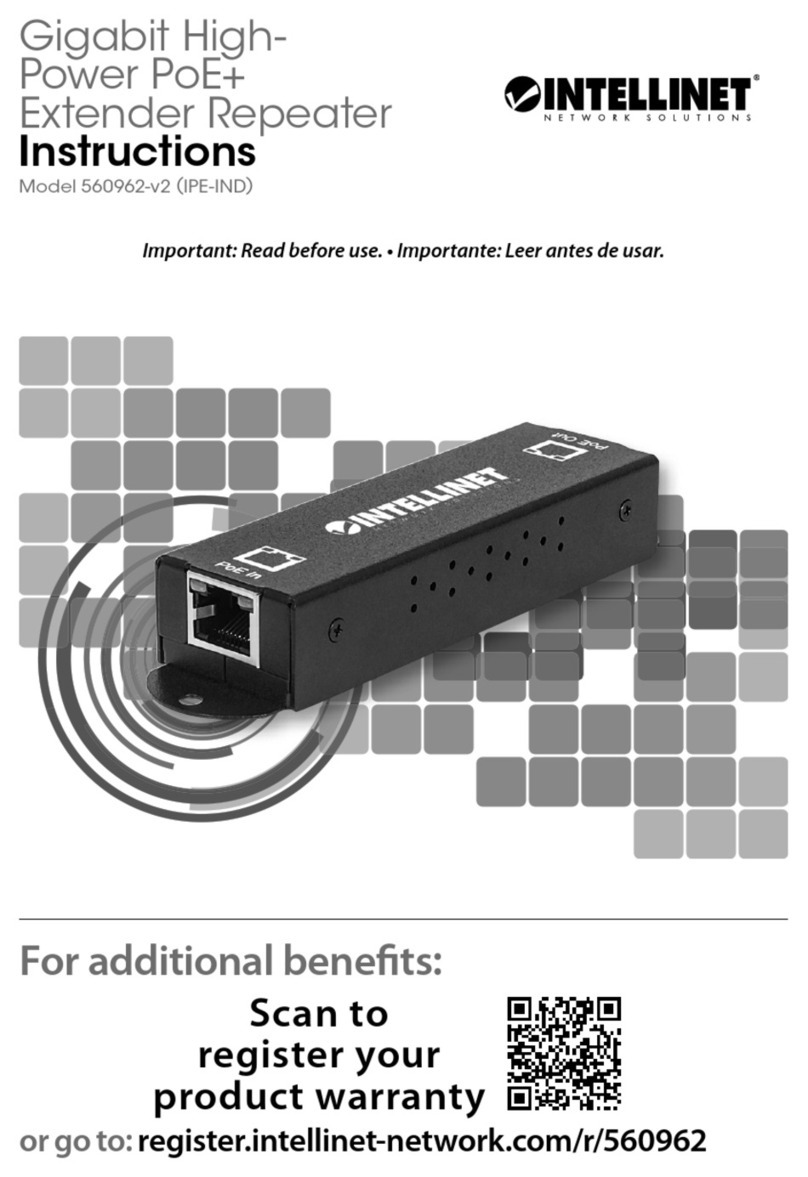
INSTALLATION GUIDE FOR mBDA OD SERIES
Copyright - refer to title page
0.2 INDEX TO FIGURES AND TABLES
Figure 1: Front, Side and Bottom Views of the mBDA Enclosure............................................................. 10
Figure 2: Front, Side and Bottom Views of the dual-band combiner Enclosure........................................ 11
Figure 3: mBDA Functional Block Diagram................................................................................................ 12
Figure 4: Dual-band mBDA System Diagram ............................................................................................ 12
Figure 5: Layout of the mBDA.................................................................................................................... 13
Figure 6: Layout of the mBDA Combiner Unit............................................................................................ 13
Figure 7: Mounting Rack Overview............................................................................................................ 19
Figure 8: Install Mounting Rack1................................................................................................................ 20
Figure 9: Install Mounting Rack2 and Mounting Rack Bolt ........................................................................ 20
Figure 10: Hand up the mBDA................................................................................................................... 21
Figure 11: Finish Installation ...................................................................................................................... 21
Figure 12: Install Mounting Rack Bolt......................................................................................................... 22
Figure 13: Install Mounting Rack2.............................................................................................................. 22
Figure 14: Hand up and Secure the second mBDA................................................................................... 22
Figure 15: Finish Installation ...................................................................................................................... 23
Figure 16: Equipment Connectors ............................................................................................................. 24
Figure 17: Operation Window .................................................................................................................... 25
Figure 18: Combiner Connectors............................................................................................................... 25
Figure 19: Communication Cable connection............................................................................................ 27
Figure 20: Communication Cable connection............................................................................................ 27
Figure 21: Battery Connection in Operation Window................................................................................. 28
Figure 22: OMT Connection without Chassis Open................................................................................... 28
Figure 23: RFU LEDs on Outer Window.................................................................................................... 29
Figure 24: Input IP Address........................................................................................................................ 32
Figure 25: Input Domain Name.................................................................................................................. 32
Figure 26: Input User Name and Password............................................................................................... 32
Figure 27: Web GUI Main Screen.............................................................................................................. 33
Figure 28: [Devices] Screen....................................................................................................................... 33
Figure 29: Main Control Unit ...................................................................................................................... 34
Figure 30: RF Unit...................................................................................................................................... 34
Figure 31: RF Unit Detail Information......................................................................................................... 35
Figure 32: [Commissioning] Screen........................................................................................................... 35
Figure 33: [Firmware] Screen –MCU Firmware Upgrade.......................................................................... 36
Figure 34: [Firmware] Screen –Module Software Upgrade....................................................................... 36
Figure 35: [Firmware] Screen –Pop-up Window 1.................................................................................... 36
Figure 36: [Firmware] Screen - Swap......................................................................................................... 37
Figure 37: [Management] Screen............................................................................................................... 37
Figure 38: Management –Import & Export................................................................................................ 38
Figure 39: Management –IP Setting.......................................................................................................... 38
Figure 40: Management –Comm. Setting................................................................................................. 39
Figure 41: New Site Report is for easy monitoring set up.......................................................................... 39
Figure 42: Management –Security............................................................................................................ 40
Figure 43: Modify Password....................................................................................................................... 40
Figure 44: Management –Device Reset.................................................................................................... 40
Figure 45: Management –PA Reset.......................................................................................................... 41
Figure 46: Management –Device Info....................................................................................................... 41
Figure 47: Management –Isolation............................................................................................................ 42
Figure 48: Management –Report .............................................................................................................. 42
Figure 49: Commissioning Procedure - Start............................................................................................. 43
Figure 50: Commissioning Procedure –Site Info. Setting ......................................................................... 43
Figure 51: Dev Info & Date/Time................................................................................................................ 44
Figure 52: Commissioning Procedure –Isolation Detective ...................................................................... 44
Figure 53: Commissioning Procedure –Isolation Detective Confirm......................................................... 45
Figure 54: Commissioning Procedure –Isolation Detection Failed ............................................................ 45
Figure 55: Commissioning Procedure –Isolation Detection Finish............................................................. 45
Figure 56: Commissioning Procedure –Sub-band bandwidth and Switch Setting.................................... 46
Figure 57: The Protective Frequency Edge Interval (GSM system)........................................................... 46
